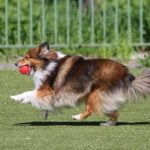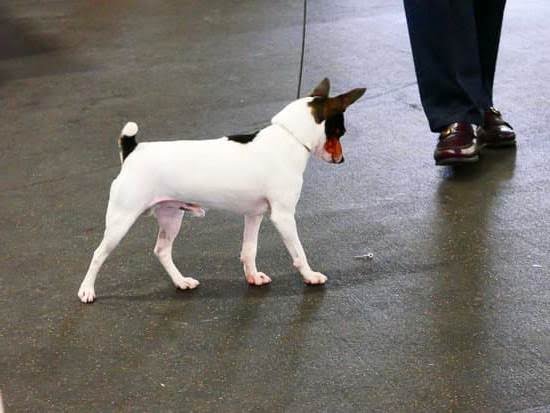How do you train a dog to do paw? Paw training is an essential skill that not only impresses your friends and family, but also strengthens the bond between you and your furry companion.
In this article, we will explore the importance of paw training and its benefits for dogs, as well as provide a step-by-step guide on how to successfully train your dog to do paw. From setting the foundation of trust and positive reinforcement to troubleshooting common challenges, we will cover all aspects of this valuable training process.
Training your dog to perform the paw command goes beyond just teaching a cute trick. It plays a crucial role in enhancing communication between you and your pet, building confidence, and providing mental stimulation for your dog. Additionally, paw training can contribute to strengthening the overall obedience of your dog, making it an important aspect of their development and well-being.
Before delving into the specific steps of paw training, it is vital to establish a positive and trusting relationship with your dog. This sets the foundation for successful training and ensures that your pet feels comfortable and secure during the process.
Basic obedience training such as sitting, staying, and coming on command are prerequisites for paw training and lay the groundwork for effective communication between you and your dog. Throughout this article, we will discuss various methods for achieving these foundational elements before progressing to paw training.
Setting the Foundation
Before embarking on the journey of training your dog to do paw, it is crucial to establish a strong and positive relationship with your furry companion. Building trust and creating a bond based on mutual respect will lay the foundation for successful training and ensure a harmonious relationship between you and your dog.
To set the foundation for paw training, begin by spending quality time with your dog and getting to know their unique personality and behavioral cues. Engage in activities that your dog enjoys, such as playing fetch or going for walks, to create positive associations with your presence. This will help build trust and a sense of security for your dog, making them more receptive to learning new commands.
Additionally, focus on positive reinforcement by rewarding good behavior with treats, praise, and affection. This will strengthen the bond between you and your dog and create a positive learning environment for paw training. Avoid using punishment or harsh corrections as they can damage the trust between you and your dog, making it more difficult to train them effectively.
- Spend quality time with your dog
- Engage in activities that they enjoy
- Use positive reinforcement for good behavior
By setting a solid foundation based on trust, respect, and positivity, you will pave the way for a successful paw training journey with your beloved canine companion. Remember that patience and consistency are key when building this foundation, as it will ultimately contribute to the overall success of training your dog to do paw.
Basic Obedience Training
Teaching your dog to respond to basic commands such as sit, stay, and come is essential before attempting to train them to do paw. These foundational commands not only establish a basis for communication with your dog but also help to build trust and respect in your relationship. In this section, we will discuss the importance of basic obedience training and how it paves the way for successful paw training.
Establishing Communication and Trust
Before diving into paw training, it’s crucial to establish a clear line of communication with your dog. Teaching them to sit, stay, and come on command lays the groundwork for effective interaction. When your dog responds obediently to these basic commands, it shows that they trust and respect you as their owner and leader. This mutual understanding forms the basis for successful paw training as it sets the stage for further learning and cooperation.
Paving the Way for Paw Training
Basic obedience training serves as a prerequisite for paw training because it introduces your dog to the concept of following cues and commands. This fundamental understanding of obedience will make it easier for them to grasp new commands like “paw.” Additionally, teaching these initial commands creates a positive association with learning and rewards, making your dog more receptive to further training. By mastering sit, stay, and come, your dog builds confidence in their ability to learn new behaviors.
The Role of Consistency
Consistency is key when it comes to basic obedience training. Repeating the same commands consistently and reinforcing them with praise or treats helps cement these behaviors in your dog’s mind. Consistent training also establishes clear boundaries regarding behavior expectations, which are essential for successful paw training later on. Patience plays a vital role as well; ensuring that you remain patient during this initial phase will create a harmonious environment for both you and your dog.
By understanding the importance of basic obedience training before introducing more advanced commands like “paw,” you can set yourself up for success in fostering a strong bond with your furry companion through effective communication and mutual respect.
Using Positive Reinforcement
Positive reinforcement is a crucial aspect of training your dog to do the “paw” command. This method involves rewarding your dog with treats, praise, and affection when they successfully perform the desired behavior. Positive reinforcement not only motivates your dog to learn but also strengthens the bond between you and your furry friend.
Choosing the Right Rewards
When using positive reinforcement during paw training, it’s important to select rewards that are highly desirable to your dog. This could include small pieces of their favorite treat, verbal praise in an enthusiastic tone, or gentle petting and cuddles. By understanding what truly motivates your dog, you can effectively reinforce their good behavior and make the training process enjoyable for them.
Timing and Consistency
The timing of the reward is also crucial in positive reinforcement. It’s important to deliver the reward immediately after your dog offers their paw so that they can associate the action with the positive outcome. Additionally, consistency is key in reinforcing good behavior. Be sure to reward your dog every time they respond correctly to the “paw” command, as this will help solidify their understanding of what is expected from them.
Avoiding Punishment
It’s vital to refrain from using punishment or scolding during paw training, as this can have a negative impact on your dog’s willingness to learn and can damage the trust between you. Instead, focus on acknowledging and rewarding their efforts and progress. This will create a positive learning environment for your dog and strengthen your relationship with them.
By utilizing positive reinforcement methods effectively during paw training, you can create a fun and rewarding experience for your dog while helping them master this adorable trick. Remember that every dog learns at their own pace, so patience and consistency are key throughout the training process.
Step-by-Step Guide
Training your dog to do paw involves a step-by-step process that requires patience, consistency, and positive reinforcement. Before starting paw training, it is essential to ensure that your dog has mastered basic obedience commands such as sit, stay, and come. These commands serve as the foundation for teaching your dog to do paw and will make the training process more manageable.
To begin paw training, start with your dog in a sitting position. Hold a treat in one hand and place it in front of your dog’s nose. As your dog sniffs the treat, slowly move your hand towards their paw. Once they lift their paw to reach for the treat, gently grasp their paw with your hand and give them the treat while praising them with encouraging words such as “good job” or “paw”.
It is crucial to repeat this process consistently and patiently until your dog becomes familiar with the action of lifting their paw on command. You can also introduce a verbal cue such as “paw” or a specific hand signal to associate with the action. Over time, continue practicing and reinforcing the behavior until your dog responds reliably to the verbal cue or hand signal without needing the presence of a treat.
When training your dog to do paw, keep in mind that each canine companion is unique and may progress at different rates. Some dogs may pick up the behavior quickly, while others may take more time to understand and execute the command. It’s important to be patient and understanding throughout the training process to create a positive learning experience for your pet.
| Training Step | Description |
|---|---|
| Establish Basic Obedience | Ensure that your dog has mastered sit, stay, and come commands before starting paw training. |
| Use Positive Reinforcement | Reward your dog with treats and praise when they successfully lift their paw on command. |
| Introduce Verbal Cue | Associate a verbal cue such as “paw” with the action of lifting their paw. |
Troubleshooting
Training your dog to do paw can be a rewarding experience, but it’s not without its challenges. As you embark on this training journey, it’s important to be prepared for common setbacks and know how to address them effectively. Here are some troubleshooting tips for addressing challenges that may occur during paw training:
1. Lack of Interest: Some dogs may show little interest in learning the paw command. If your dog seems disinterested, try using high-value treats or toys as motivation. Also, consider taking short breaks during training sessions to keep your dog engaged and prevent boredom.
2. Confusion: Your dog may become confused about what you’re asking them to do when learning the paw command. To address this, go back to basic obedience training and reinforce the sit command before reintroducing the paw cue. Be patient and consistent in your approach, providing clear hand signals and verbal cues.
3. Reluctance to Use Paws: Some dogs may be hesitant to use their paws or may exhibit fear or discomfort when attempting the paw command. In these cases, it’s essential to create a safe and supportive environment for your dog. Use positive reinforcement techniques such as praise, treats, and gentle encouragement to build your dog’s confidence and willingness to perform the desired behavior.
Remember that every dog is unique, so it’s essential to tailor your troubleshooting approach to fit your dog’s individual needs and temperament. By understanding and addressing these common challenges effectively, you can overcome setbacks and continue making progress in training your dog to do paw.
Consistency and Patience
Training your dog to do paw, or shake, is a fun and impressive trick that can also serve as a bonding experience between you and your pet. However, it’s important to remember that this training process requires consistency and patience in order to be successful. By following some key strategies and tips, you can effectively teach your dog to do paw while strengthening your relationship with them.
One of the most crucial aspects of training your dog is maintaining a consistent routine. Dogs thrive on routine and structure, so setting aside dedicated time each day for training sessions will help reinforce the behavior you are trying to teach. Whether it’s practicing basic commands or specifically working on the paw trick, regularity in training will help your dog understand what is expected of them.
In addition to consistency, it’s essential to approach the training process with patience. Every dog learns at their own pace, so it’s important not to get frustrated if they don’t pick up the paw command right away.
Using positive reinforcement techniques such as treats and praise will encourage your dog to keep trying until they understand what you are asking of them. Remember that building a strong foundation through positive interactions will lead to a more successful training experience for both you and your dog.
| Key Strategies | Tips |
|---|---|
| Maintain Consistent Training Routine | Set aside dedicated time each day for training sessions |
| Exercise Patience | Use positive reinforcement techniques such as treats and praise |
Celebrating Success
Training your dog to do paw can be a fun and rewarding experience for both you and your furry friend. Celebrating their achievements as they master this command is an important part of the training process. Not only does it reinforce the desired behavior, but it also strengthens the bond between you and your dog.
One way to celebrate your dog’s success in learning the paw command is by offering verbal praise and affection. When your dog successfully raises their paw on command, use a cheerful tone of voice to praise them and give them a gentle pat or scratch behind the ears. This positive reinforcement will let your dog know that they have done something right and will encourage them to continue performing the behavior.
In addition to verbal praise, you can also reward your dog with treats when they successfully execute the paw command. Using small, bite-sized treats that are especially enticing to your dog can be an effective way to reinforce the behavior.
As soon as they lift their paw as directed, immediately offer them a treat along with words of encouragement. This positive association between performing the paw command and receiving a tasty reward will motivate your dog to repeat the behavior in the future.
Celebrating your dog’s achievements during paw training is essential for building their confidence and reinforcing good behavior. By using verbal praise, physical affection, and treats as rewards, you can show your appreciation for their efforts and create a positive learning environment for successful paw training sessions.
Conclusion
In conclusion, training a dog to do paw is a rewarding experience that fosters a strong bond between pet and owner. By setting a foundation of trust and positive reinforcement, owners can establish an effective training routine that ultimately leads to success in teaching the paw command. Obedience training, consistency, and patience are crucial components in the process, as they lay the groundwork for a well-behaved and responsive canine companion.
It’s important to remember that training doesn’t end once your dog learns the paw command. Ongoing training and bonding activities are essential in maintaining the skills and behaviors acquired during training sessions. This continuous engagement not only reinforces your dog’s abilities but also strengthens the relationship between you and your furry friend. Bonding through activities such as walks, playtime, or simply spending quality time together helps create a harmonious and fulfilling companionship.
Ultimately, successfully training a dog to do paw involves dedication, perseverance, and understanding. Every dog is unique, and it’s important for owners to tailor their approach based on their pet’s individual personality and learning style. In doing so, both owner and dog can enjoy an enriching journey of growth while strengthening their connection. Through patience, consistency, and love, any dog can learn the paw command-and more importantly-foster a strong bond with their human companion.
Frequently Asked Questions
How Do You Teach a Dog to Do Paw?
Teaching a dog to do paw can be done through positive reinforcement training. Start by holding a treat in your closed hand and wait for your dog to try to get it with their paw. When they do, reward them with the treat and praise.
How Long Does It Take to Learn Paw?
The time it takes for a dog to learn the paw command varies from dog to dog. Some dogs may pick it up quickly within a few training sessions, while others may take longer. Consistency and patience are key in teaching this trick.
How Do You Train a Dog’s Paw Target?
Training a dog’s paw target involves using a target such as a plastic lid or your hand for the dog to touch with their paw on command. Start by placing the target near the ground, say “paw,” and encourage your dog to touch it with their paw. Reward and repeat until they understand the command.

Welcome to the blog! I am a professional dog trainer and have been working with dogs for many years. In this blog, I will be discussing various topics related to dog training, including tips, tricks, and advice. I hope you find this information helpful and informative. Thanks for reading!





